
Ultimate Guide to Reynisfjara Beach, Iceland
No-one has missed the beautiful black beaches of Iceland on Instagram. Wanting to know more about how to visit this spot? See our ultimate guide to Reynisfjara Beach, Iceland.
Our staff will respond to your query promptly and provide detailed information to your questions.
8 days - Self-drive independent tour with Silfra snorkelling, glacier walking and into the volcanoes.
Experience the thrills of the great outdoors on this Iceland tour. This self-drive journey allows you to explore the sights at your own pace and includes countryside boutique accommodation that lets you fully recharge for each day’s adventures.
This is a full-throttle holiday that features the best Iceland's southern region has to offer. Explore the insides of a volcano, go whale watching in a RIB boat and snorkel in the crystal clear water in the Silfra fissure. Depending on the season, glacier walking, kayaking and ice climbing are also included in this active tour. Finally, soak your weary bones in the Blue Lagoon with our comfort package.
A perfect blend of energetic pursuits and breathtaking sights, this trip is bound to leave you breathless!

As a Certified B Corporation, 50 Degrees North has designed this tour using handpicked local hoteliers and suppliers who share our ethos of delivering services and activities of high social and environmental standards.
The CO2-e per person per day of all tours is carefully measured following each season. We fully offset all emissions of our tours on your behalf, and we constantly look at ways to reduce emissions where possible.
Transfers & self-drive with rental vehicle
The activities are seasonal and will be substituted depending on what you want to do and what is available.
Extra car insurance, such as S-CDW and gravel protection.
If you wish to hire an automatic car, these are 'on request' and can be difficult to obtain. Please seek further advice with us.
Flight tickets to/from start and end points, any airport taxes, travel insurance, visas, gratitudes and any items of personal nature.
On arrival, make your own way to the hotel. Check into your hotel and enjoy exploring this lovely capital. Be sure to check out the design stores and cool cafes in central Reykjavik.
Today you will be doing the 'Inside the Volcano' tour. You are picked up from your hotel for this 5–6 hour tour (about 35-40 minutes inside the volcano). There is a hike into the volcano and lunch provided. After arriving on location, your group will be informed about all safety procedures. In smaller parties of 6–7 people, you will take a lift down for about 6 minutes through the centre of the dormant Thrihnukagigur Volcano.
You will spend about half an hour on the ground of the volcano, during which time you can take as many photos as you want. However, you are not allowed to take rocks and stones from the crater. Expert guides will be with you at all times, in the cable lift and on the ground in the magma chamber.
Return to Reykjavik, an easy city to explore on foot or bike. Feel the fresh air on your face with a visit to the harbour and perhaps enjoy a food tour of this small capital. If you're interested in experiencing the city's thriving coffee culture, head to the main street, Laugavegur, to enjoy its various shops and cosy cafes. Be sure to consider seeing the live show at the Harpa centre "Icelandic Sagas The Greatest Hits".
After breakfast, join an amazing 2-hour RIB Express tour to see the magnificent whales of Faxaflói Bay. The 12-meter-long boat allows you to get very close to the animals in a way that's safe for both passengers and whales. When you head out into the bay it's a fast, thrilling ride with the wind in your hair. On the way, we stop at Akurey, the puffin island to catch a glimpse of these adorable seabirds that live around here during their nesting season.
You will have plenty of time out in the whales' feeding grounds before returning back to Reykjavik on a scenic route along the coast. A perfect photo opportunity!
After the tour its recommended that you stop by the Whales of Iceland Exhibition in the harbour area. Admission is included.
Pick-up your rental car this morning, and then, snorkelling in Silfra is today's adventure and one of Iceland's best-kept secrets. Iceland straddles the rift between the Eurasian and North American continental plates and you can see the rift for yourself on this snorkelling trip. You are provided with a dry suit, as the temperature of the water is around 2 degrees. You then get to float on the lake's surface, peering into the depths through pristine water that takes twenty years to filter down from a glacier through volcanic ash. By the time it reaches Silfra, the water is so transparent that people have been known to get vertigo as they hover on the surface, floating as if on air over the fissure below.
After snorkelling, you can explore Þingvellir National Park and the surrounding area. Þingvellir is one of the most frequently visited tourist sites in Iceland where you can become better acquainted with Iceland's history and traditions. You can join guided tours of the site and also find short hiking trails to help you explore Þingvellir National Park.
This morning, hit the road to enjoy the attractions of the Golden Circle before the crowds (approximately 5 hours driving in total). Head to Geysir which gave its name to the international word geyser, watch the most popular geyser, Stokkur (the Churn) which erupts about every 10 minutes. Then continue on to see the beautiful Gullfoss waterfall, the two-tiered waterfall is one of the most well-known and beautiful in Iceland. It is so large, it's difficult to see it all from one viewpoint!
Then make your way around the beautiful South Coast of Iceland, travelling via Dyrhólaey (Iceland's southernmost point accessible via a short detour on Road 218) and the Reynishverfi’s scenic black beach with basalt columns. Vik is a good spot for a late lunch before continuing on to Kirkjubæjarklaustur. You’ll pass through part of the moss-covered Skaftáreldahraun lava field, believed to be the largest lava field created from one eruption. Take a small detour and walk to Fjadrargljufur Canyon. In Kirkjubæjarklaustur you’ll find a number of lesser known attractions such as a small waterfall (Systrafoss), Kirkjugólf (Church Floor) basalt columns, and lots of craters. Your accomodation is close by this evening.
This morning, you will go Glacier kayaking, the ultimate way to experience the magnificence of the world famous Vatnajökull National Park. This unforgettable trip enjoys unbeatable panoramic views of the surrounding mountains and glaciers and their reflection in the mirror like water of the Heinaberg Lagoon. From the lagoon you will have an excellent view
over Vatnajokull and on the tour you step on one of the icebergs and take a short walk, overlooking the lagoon and surrounding area, with safely equipped with the appropriate glacier gear.
Enjoy a outside hot tub this afternoon at your hotel, happy hour between 6 - 8 pm before a lovely dinner at the lagoon restaurant.
After breakfast, walk the Svínafellsjökull glacier tongue. Svínafellsjökull is a breathtaking outlet glacier of the Vatnajökull glacier and the scenery and views are simply stunning. You will walk through a wonderland of glacial ice sculptures, meandering through ice ridges and the deep crevasses of the glacier. At the outset of our tour, an experienced guide teaches you how to use basic glacier equipment like crampons and ice axes, the required equipment for this tour.
After the activity, make your way to the Blue Lagoon for a relaxing experience and dinner. (Return your hire car at the Keflavik Airport tomorrow morning.)
Drive to Keflavik International Airport and return your hire car before flying out.
Price per person, twin share. There are five premium included activities on this tour. Due to the current volatility of the Icelandic Króna (ISK) and car hire costs, this price is indicative. We are happy to individually quote this tour for you.
The age limit for this tour is 14. We can adjust the itinerary to suit families with smaller kids by changing the activities.
The accommodation in this itinerary comprises some of Iceland’s best countryside properties, which are in short supply during the peak summer season Jun-Aug. Booking early is essential.
Driving in Iceland:
A hire car cannot be driven in the Highlands area. In regards to gravel roads; technically you’re not recommended to take a hire car on gravel roads, but in Iceland you may not have a choice. Some guesthouses are located on gravel road. Consider getting extra car insurance with gravel protection if it is something that might worry you. Ask us about what car would suit you - as it depends on the time of year and where you want to go!
When driving in Iceland, plan that all your destinations are going to take longer to reach than planned. Most of the time it is because you are going to make unanticipated stops to check out a waterfall, a viewpoint, a museum, or a shop. Sometimes it is also that traffic is just slow, animals may be crossing the road, or there is bad weather. If you build some extra time into your day, you won’t have to be rushing around at the end of the day.
For more Iceland driving rules and tips and to stay up to date on road conditions, check out the Road Conditions website and for all kinds of safety and travel information in Iceland check out the Safe Travel website. Bookmark both of these websites before you start your drive in Iceland.
IMPORTANT NOTE:
Weather conditions may occasionally affect certain activities, and as a result, the schedule may be adjusted to ensure the best possible experience for all guests. For multi-activity stays, often the order of the activities will be confirmed locally on arrival. Activities might vary slightly in their duration or location due to the weather and local conditions. Any activities that are unable to be re-scheduled due to weather conditions will be refunded as a general practice, as determined by the activity provider.
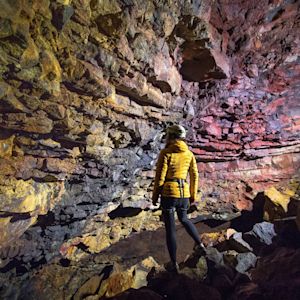
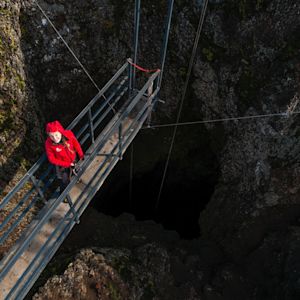
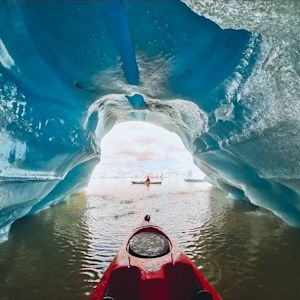
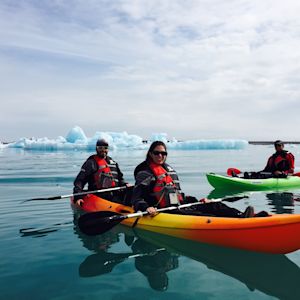
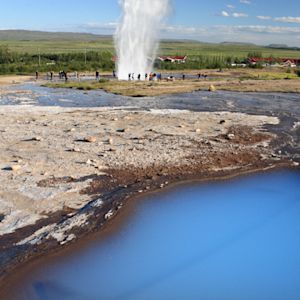
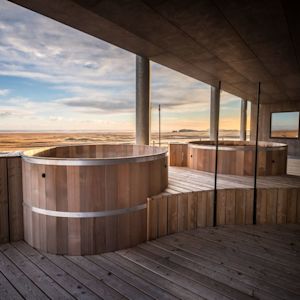
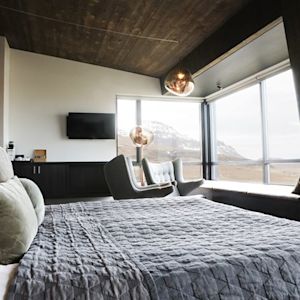
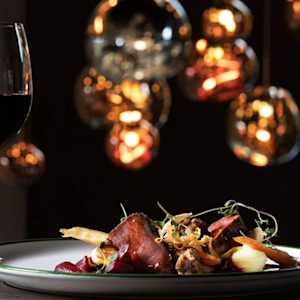
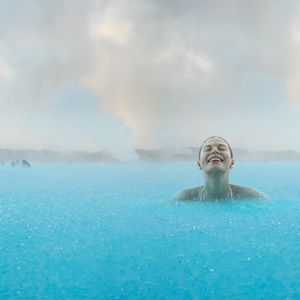

No-one has missed the beautiful black beaches of Iceland on Instagram. Wanting to know more about how to visit this spot? See our ultimate guide to Reynisfjara Beach, Iceland.

Soak in a lava field & fine dine in your dressing gown - make the most of your visit to the Blue Lagoon.

For fully vaccinated travellers, Iceland now presents a great little high-end escape opportunity away from the usual crowds. Visit this summer and fingers crossed, you can also hike out to see the newly erupting volcano, a stone's throw away from Reykjavik.
Conditions in Iceland are in many ways unusual and often quite unlike what foreign drivers are accustomed to. It is, therefore, very important to read about driving conditions and if this type of tour suits you.
Road conditions in Iceland vary substantially. Highway 1 (Þjóðvegur 1) is mostly paved, but other country roads are often very narrow, steep and unpaved. Those unfamiliar with such conditions often find it difficult to drive on Icelandic roads, especially in winter. We advise all travellers to gain information before heading off to the roads and recommend driving a 4wd during the winter (October - March). Please visit the website www.safetravel.is for further information.
Before you get in your car and have to dial 112, please check the road conditions en route to your destination with this very informative map.
This atlas/guidebook/crazy facts book is also recommended.
Most of the farms and guesthouses have good signs on the roads and are marked on detailed maps. However we advise all travellers to buy good maps (e.g. 1:500 000) and to go over the route before the journey. If lost do not hesitate to call the accommodation and ask for directions.
The most useful map in the car and essential companion to the Iceland Road Atlas is the KORTABOK, beautifully designed by Hans H. Hansen, on a scale of 1:300 000. It can be found in all good bookstores and the better gas stations.
There are also some new mobile Apps that you can use to guide you.
**Just a note: you often stay at a different accommodation each night on these self-drive itineraries. Be sure to pack with this in mind. **
Check-in is usually after 14:00 and check-out before 12:00 but it can vary between the accommodation. The farmers should be notified if you intend on arriving later than 18:00.
Dinner is available in most of the farms and guesthouses. Some of them have fantastic restaurants with well known chefs while others offer more traditional meals in their own kitchen! Lamb and fish are amongst the most common dishes in Iceland.
Accommodation places we book for you do evening meals. When staying in the smaller farms it is often a good idea to give them a call in the morning if you wish to have dinner in the evening. This way you will also know what time dinner is served (on smaller farms there's usually a set time, around 7-8pm or so). Some of the bigger places have a restaurant that might be open for a few hours each night. Cost for a basic soup & bread dinner is around ISK2000 (roughly AUD20), 3 course meals (which are usually excellent) are around ISK4000-6000 (AUD 40-60), depending what you order. Glass of house wine was around ISK1100 (AUD11) in most places.
For lunch you can stop at petrol stations for example (they usually serve little sandwiches etc.), but I would probably recommend having some snacks (fruit, biscuits, nuts etc.) in the car, as the more remote locations won't necessarily have too many options.
Petrol stations also sell coffee and hot chocolate. Be sure to find the 'self heating' hot chocolate (and coffee) cans that you can get in some places ( Buy a few of these if you see them, and have them in the car).
Usually, horseback riding can be booked on the spot. Day tours and longer tours however must be booked in advance.
It is not necessary to drive a 4 wheel drive car in summer unless you are crossing the highland and F-marked roads.
The summer months, June, July and August, is the most popular time to visit Iceland. However spring and fall can be just as nice, especially for those who want to enjoy the tranquility of the countryside. If you are looking for a unique experience, a winter visit will be unforgettable with the northern lights and a magical landscape.
Some farmers in Iceland supplement their low farming income and cater for tourists, and the most natural way of doing that is building cabins on their land. They are reasonably basic, with private facilities in the cabins and rooms. The meals offered on the farm stays are generally traditional home made food featuring locally sourced ingredients from their own farm or neighbouring farms, such as geothermally grown vegetables, organic beef and lamb, freshly caught fish and home baked bread.